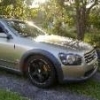How To Avoid Rust In The Rear End Of Your M35 Stagea
Announcements
-
Similar Content
-
Latest Posts
-
yeah i have no difference this has been checked also fine Fuel is coming through fine, have spark on all cylinders, yeah thats what im thinking aswell, maybe its time to replace the injectors
-
By Leonard D. Hoffman · Posted
Hey mate, I know this is an older post but just in case you're still looking or someone else stumbles across this thread in a similar situation, I’d recommend checking out P&S Logistics. They operate routes from the Gold Coast to Adelaide, and they’re pretty flexible with dates. I’ve found them to be reliable and professional, which is what you want when you're dealing with something as valuable as a GTR. https://pslogistics.com.au (P&S Logistics Website) You can get quote online through website. Hope that helps someone out! -
By Murray_Calavera · Posted
We are talking about different things, all I'm saying is there are plenty of people out there that don't stop modifying their car after it has been engineered.






Recommended Posts
Create an account or sign in to comment
You need to be a member in order to leave a comment
Create an account
Sign up for a new account in our community. It's easy!
Register a new accountSign in
Already have an account? Sign in here.
Sign In Now